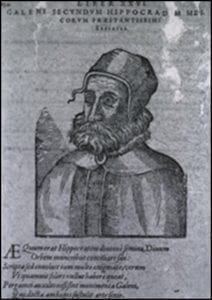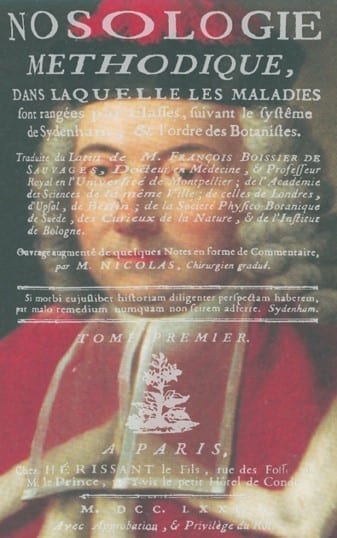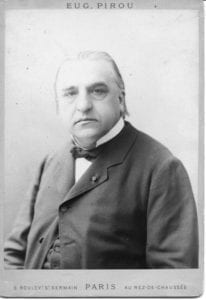Karen Langer
New York, New York, United States
Amnesia, the medical record noted. He developed amnesia after a mechanical fall on black ice, resulting in a mild traumatic brain injury and a hip fracture. After surgery to repair the hip, there was onset of metabolic encephalopathy, and between the encephalopathy and the brain injury he developed symptoms of significant amnesia as he was recovering from the more acute phase of the medical condition. The encephalopathy began to clear, but the effects of the brain injury persisted.
 |
| Fig. 1 Galen, Image Courtesy of the National Library of Medicine. |
He was sitting upright on the edge of his hospital bed on the unit. Dressed in a white polo shirt and black sweatpants, with soft gray hair, he conveyed a certain humble demeanor that belied his academic stature. He held a Professorship, having practiced medicine for decades after earning his M.D. degree followed by a Ph.D. in basic science, and was renowned for his scholarly achievements.
He was aware that there were memory changes and was naturally and appropriately pained by these, although he remained unaware of the full extent of memory loss. He seemed at times to forget that he had forgotten. However, when confronted with the memory loss directly, in the face of inability to retrieve information requested, he became painfully aware in the moment. His mood sank accordingly. Cloaked in a penumbra of forgetfulness, he dropped his head and looked downward, as if ashamed of these losses beyond his control.
Through a combination of clinical assessment and performance on neuropsychological measures, the amnestic difficulties were further delineated. The amnesia was characterized by both moderate retrograde features (forgetting knowledge which preceded the onset of the condition) and moderate to severe anterograde features (difficulty learning and recalling new information), leading to a rather significant loss of memory and ability to learn. The amnesia was the most marked cognitive sign, against the backdrop of relative preservation of global intellect, of consciousness, and less-so, of language. His features fit the classic description of amnesia as an independent disorder. He was not able to remember what was said to him in conversation a half hour before, except for some ability to recognize bits and pieces with repeated cues (i.e., the lady who brings the lunch tray wears a green hat, g, Gloria). This difficulty was noted for new learning of names, people, and other recently-learned events. Recognition of people he saw regularly, but met after the onset of his condition, remained highly limited.
Existing recollection of the past was far better preserved, following Ribot’s Law,1 but there were still gaps in recall, such as detailed information about familiar people (his wife’s birthday and the names of all his grandchildren, though he did recognize them), and the year he graduated medical school.
“I can’t remember a blessed thing of all I studied and learned. It’s just gone! When I’m alone, it’s as though some lock has been clamped on my memory, but when people talk to me, or I listen to a conversation, that lock seems to open a bit. Listening to them stimulates my thinking a little.”
—A.R. Luria, The Man with a Shattered World2
 |
| Fig. 2 Classifier of diseases, Retrieved from neuroportraits.eu Permission Courtesy of Dr. Nicholas J. Wade |
The clinical expression of amnesia often includes difficulty in recollection of ideas or experiences. But the ability to tap or teach overlearned knowledge based on scientific concepts, as he was so accustomed to doing in the classroom or at the bedside, was relatively well-preserved, bolstered as it was by life experiences, parables, and visual images. From these scientific discourses he continued to derive much satisfaction, and a sense of continuity with his personal identity. You would need to start him on a familiar topic to fuel his recollection and engage his intellect, and then you could see the vitality glowing in his face and posture, as if awakened in conversation, resuming where time had trailed off.
Amnesia, meaning loss of memory, originates from the Greek, ἀμνησία.3 In Greek mythology, the river of oblivion or forgetting was named Lethe (λήθη, forgetting). Galen used the term “lethe” (translated as amnesia) to describe “destruction” in functions, with lack, or loss, of memory.4 [Fig. 1 ] Expositions of amnesia after concussion and head-injury appeared in first-person accounts, such as the post-traumatic amnesia of Montaigne and Rousseau,5 and in large-scale epidemics depicted in classical works (e.g., Thucydides’ report of memory loss induced by a plague in Athens).6
“Entirely absorbed in the present moment, I remembered nothing…”
—J.J. Rousseau, The Reveries of the Solitary Walker7
Though concepts of memory and forgetfulness have thus been well-described from literary and philosophical perspectives for centuries, attribution of “amnesia” to a medical condition is credited to François Boissier de Sauvages, in an eighteenth century nosology classifying recognized illnesses of the period.8,9 This classification system listed memory loss of differing types or sources, including: venereal, senile, traumatic (e.g., contusion, head injury), plethoric (an excess of blood), pathematic (from emotional suffering, following strong emotions such as fear, terror, or chagrin), cephalalgic (following headache), intoxication (including poison, alcohol and opium), and (in later edition) febrile.10
Although concepts of disease and illness shift and evolve over time and across cultures, the portrayal of amnesia was relatively uniform as it spread internationally. Along with translation of his work into French,9 Sauvages’ groundbreaking nosology laid the foundation for medical study of amnesia in Italian, French, Spanish, German, and English scientific literature,10 with descriptive and causal associations. [Fig. 2]
Elaborate compilations of the causes of amnesia in scientific literature included assorted illnesses recognized by the late eighteenth and mid-nineteenth centuries, among them apoplexy/stroke, anoxia/hypoxia, cancerous tumor, hydrocephalus, meningitis, epilepsy, encephalitis, cholera, typhoid, tuberculosis, membrane ossification or softening, and abscesses, and with these, sources of amnesia were broadly considered and included environmentally-based and occupational health issues.10 Though the platform for current understanding of post-traumatic stress disorder (PTSD) and amnestic aspects may have been built upon Sauvages’ original “pathemate” category, deriving from strong emotion such as fear and terror, development of a notion of repressed memory as a source of psychogenic amnesia began in the late nineteenth century, via demonstrations of hypnosis in Charcot’s famous lectures, [Fig. 3] and works of writers such as Azam, Janet, and Freud.
Amnesia was characterized by degree (complete or partial), onset and course (sudden, progressive, intermittent), and duration (stable, persistent, or transient). Chronological descriptors (e.g., anterograde, defined by Souques as a difficulty in registering or learning new facts; retrograde, the forgetting of facts that occurred prior to trauma or accident, attributed to Azam; or retro-anterograde, introduced by Charcot) were well-recognized by the turn of the twentieth century.10
 |
| Fig. 3 Jean-Martin Charcot. Courtesy of the New York Academy of Medicine Library |
Severe anterograde amnesia, resulting in inability to move beyond present time, found archetypal expression later in the twentieth century, in the well-known case of H.M, who in attempt to reduce epileptic seizures, underwent radical surgical resection of bilateral medial temporal lobes. His neurosurgeon disclosed the “very grave, recent memory loss, so severe as to prevent the patient from remembering the locations of the rooms in which he lives, the names his close associates, or even the way to toilet…”11
The Russian physician Korsakoff had vividly described alcoholic-based memory disintegration in amnesia, often accompanied by confabulation.12 However, these patients were rarely disturbed by their loss of memory. In contrast, whether due to the diagnostic difference, or to justifiable pride in a personal identity so dependent on intellect and memory, our own patient’s narrative conveyed anguish with a certain awareness of struggle to recall. His emotional pain begged attention and support, as much as the need to help him compensate for memory loss.
Building on an innovative approach to amnesia rehabilitation suggested by some pioneering ideas of Sollier,13-15 our patient was encouraged to focus and fix his attention and reduce environmental distractions. He repeated auditory information and steps in new tasks, read instructions aloud, and formed multi-modal associations with a combination of pictorial (visual) cues for verbal information that he needed to learn and recall. He was given a professional-looking notebook to record daily events and visitors. Emotional impressions were encouraged to accompany more monotonous aspects of learning. Some olfactory memory enhancers were noted in the early writings of Sauvages, among them rosemary, rose petals, and lavender, and horticulture therapists used essential essences to stimulate positive recall.8 He started to associate new experiences with preserved sensory images from his past. Early-life sensory images can evoke potent recall; the well-known image of a long-ago savored madeleine forms an architectural basis of memories in Proust’s monumental work.16
Recollecting the past was a path to carrying forward to the future. It was if he was collecting fragments of the past like the rose petals strewn around by a flower-girl, and delicately, gingerly, examining and piecing them back together again, placing them inside the life-experience basket he carried within. Each new success in remembrance brought pleasure, every one of these successes being a small step in reclaiming and reconstructing the sense of self which had been so distorted by an acquired amnesia.
References
- Ribot T. Diseases of Memory. London: Kegan Paul, Trench & Co.; 1882. (Translation of 1st French ed., les Maladies de la Mémoire, 1881).
- Luria AR. The Man with a Shattered World. New York, NY: Basic Books; 1972. (Translated from the Russian by Lynn Solotaroff).
- amnesia, n.: Oxford English Dictionary – OED Online. Oxford University Press, December 2018. Web http://www.oed.com (accessed May 2017; February 2019).
- Johnston I (trans): Galen: On Diseases and Symptoms. New York, NY: Cambridge University Press; 2006: 263–264.
- Feinsod M, Langer KG. The philosopher’s swoon -The concussion of Michel de Montaigne: A historic vignette. World Neurosurg. 2012;78: 371-374.
- Thucydides. History of the Peloponnesian War, 2.49.8. T. Hobbes, trans. London: Bohn; 1843.Web http://data.perseus.org/citations/urn:cts:greekLit:tlg0003.tlg001.perseus-eng1:2.49. (accessed May 2018; April 2019).
- Rousseau JJ. The Reveries of the Solitary Walker (1782). Translated with preface, notes and interpretive essay by Charles E. Butterworth. New York, NY: New York University Press; 1979.
- Boissier de Sauvages F. Nosologia methodica sistens morborum classes, genera et species, juxta Sydenhami mentem & botanicorum ordinem […] Tomi tertii pars prima, complectens genera et species morborum ad classes VII & VIII pertinentium, nempe dolores et vesaniae. [Methodical nosology, with the classes, genera, and species of diseases, according to the Sydenham’s reasoning and the botanists’ order…First part of the third volume, including the genera and species of diseases belonging to classes VII and VIII, namely, pains and mental illnesses] (vol 3.1). Amsterdam: Sumptibus fratrum de Tournes; 1763: 408-410.
- Boissier de Sauvages F. Nosologie Methodique, dans laquelle les Maladies sont Rangées par Classes, Suivant le Systême de Sydenham, & L’ordre des Botanistes [Methodical nosology, in which diseases are arranged by classes, according to Sydenham’s system and the botanists’ order]. (Nicolas, Trans., vols. 1-3), vol 2. Paris: Hérissant le Fils; 1771: 752-755.
- Langer KG. Early history of amnesia. In: Bogousslavsky J, Boller F, Iwata M, eds: A History of Neuropsychology. Front Neurol Neurosci. vol 44. Basel: Karger; 2019: 64-74.
- Scoville WB. The limbic lobe in man. J Neurosurg. 1954;11:64-66.
- Korsakoff S. Étude médico-psychologique sur une forme des maladies de la mémoire. Rev Phil France L’et. 1889; 28: 501–30. (Korsakoff SS. Medico-Psychological Study of a Memory Disorder (WP Banks, SJ Karam, translators), Conscious Cogn. 1996; 5: 2–21.)
- Sollier P. Les Troubles de la Mémoire. 2nd ed. Paris: J. Rueff et Cie.; 1901 (First published 1892).
- Bogousslavsky J: Memory after Charcot: Paul Sollier’s visionary work. J Neurol Neurosurg Psychiatry. 2007;78:1373-1374.
- Bogousslavsky J, Walusinski O. Paul Sollier : The first clinical neuropsychologist. In Bogousslavsky J, ed. Following Charcot: A Forgotten History of Neurology and Psychiatry. Front Neurol Neurosci. vol 29. Basel: Karger; 2011:105–114.
- Dieguez S, Annoni J-M. Stranger than fiction: literary and clinical amnesia. In: Dieguez S, Bogousslavsky J, eds. Literary Medicine: Brain Disease and Doctors in Novels, Theater, and Film. vol 31. Basel: Karger; 2013: 137-168.
KAREN LANGER completed a PhD in clinical and experimental psychology, specializing in clinical and neuropsychological rehabilitation of persons with neurological disorders and disabilities. She has studied memory from clinical, theoretical, and experimental perspectives since graduate training. More recently, she has developed special interest in the history of the neurosciences, as a foundation for understanding neuropsychological phenomena.
Acknowledgments: The author gratefully acknowledges the expertise of Librarians Arlene Shaner (New York Academy of Medicine Historical Collections Librarian), Michael Agnew (Librarian for Romance Languages, Bobst Library, NYU), W. Gerald Heverly (Librarian for Classics, Hellenic Studies, and Philosophy, Bobst Library, NYU) and David DeSimone (NYU HSL).
Highlighted in Frontispiece Volume 11, Issue 3 – Summer 2019

Leave a Reply